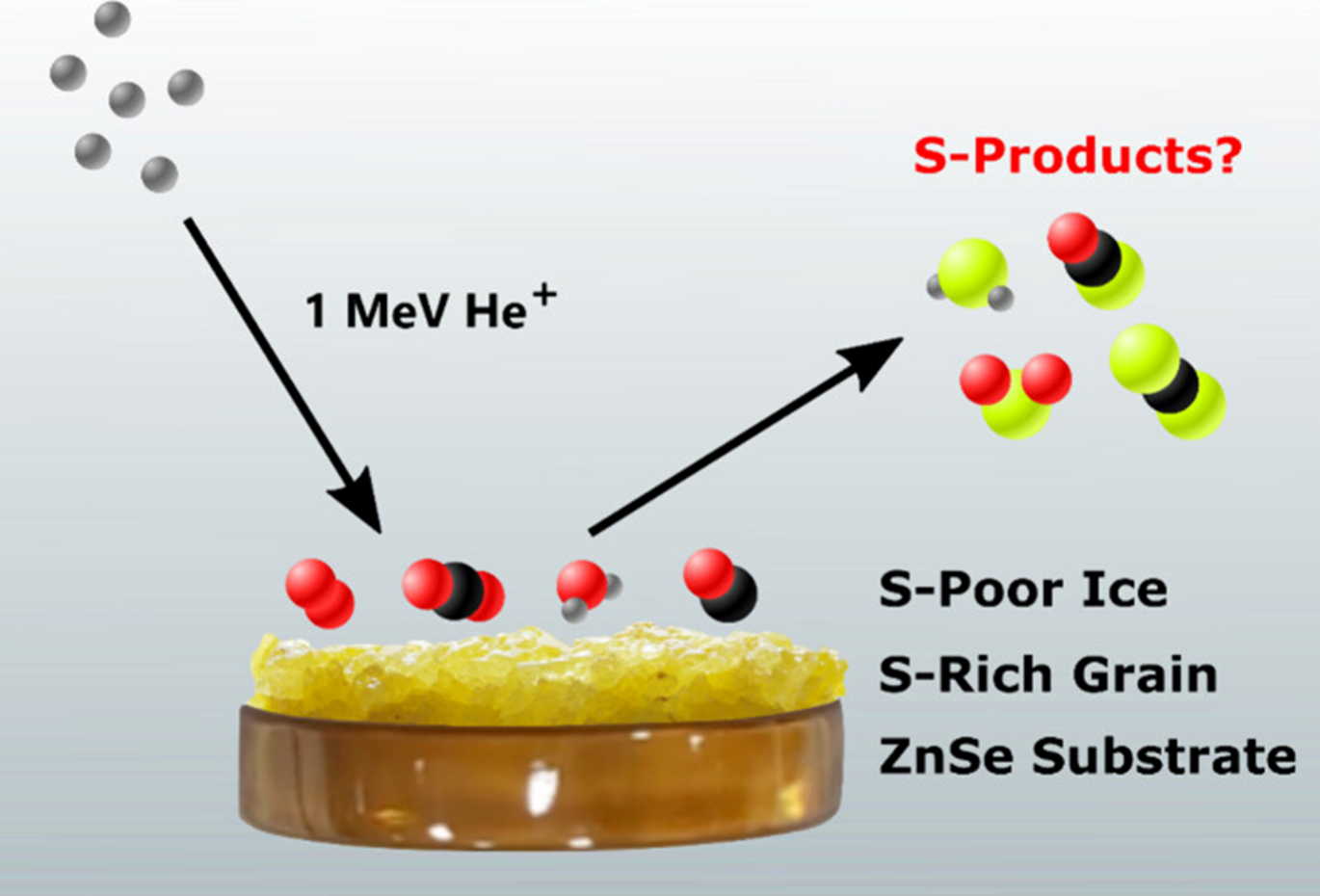New Center article - Sergio Ioppolo
Title: Cosmic Ray Irradiation of Interstellar Ices on Sulfur-Rich Grains: A Possible Source of Sulfur-Bearing Molecules

Summary:
The primary reservoir of sulfur in dense interstellar clouds remains largely unidentified. However, increasing evidence suggests that sulfur may be locked in refractory forms—such as minerals or elemental allotropes. This raises the possibility that irradiation of sulfur-free interstellar ices deposited on sulfur-rich refractory grains by cosmic rays or stellar winds could lead to the formation of simple inorganic sulfur molecules, some of which may be detectable by ground- or space-based telescopes. In this study, neat ices of O₂, CO, CO₂, and H₂O were deposited onto layers of allotropic sulfur and irradiated at 20 K with 1 MeV He⁺ ions, simulating space radiation. Additional experiments with CO₂ and H₂O ices were conducted at 70 K to better represent conditions on icy bodies in the outer solar system. Mid-infrared spectroscopy provided qualitative evidence for the formation of SO₂, CS₂, OCS, and H₂SO₄ hydrates, while H₂S was not detected. The formation efficiency of these products was quantified by calculating their G-values—the number of molecules produced per 100 eV of deposited energy—for each ice-refractory system. SO₂ and CS₂ were the most frequently observed products across experiments, though the highest G-value was associated with H₂SO₄ hydrates formed from irradiated H₂O ice on sulfur at 70 K. Notably, the experimental findings support recent astronomical observations suggesting that SO₂ in interstellar ices forms predominantly through energetic, radiolytic processes, whereas OCS likely results from nonenergetic mechanisms such as atom or radical addition reactions.
